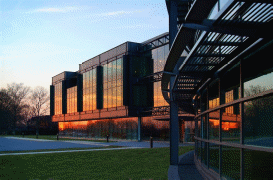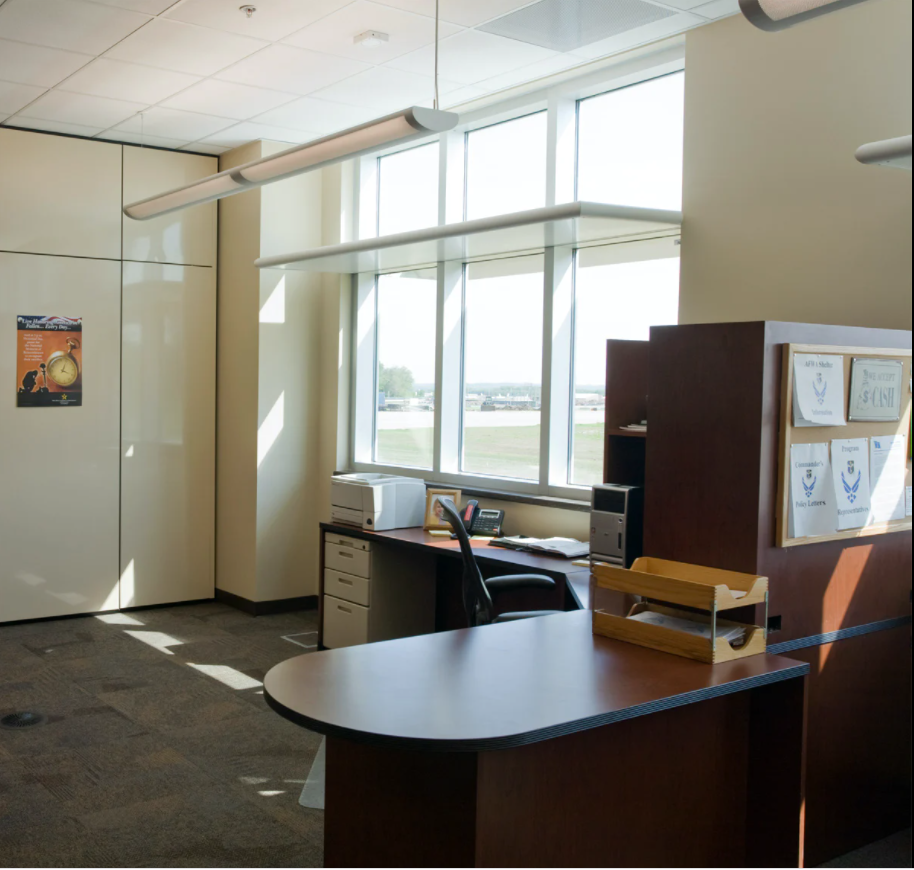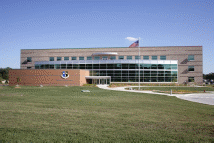Introduction
Lighting plays an extremely vital role in the lives of people, existing as a natural and inalienable part of today’s society. To best adapt created environments and spaces for human living, various types of lighting are created, which in turn allow people inside them to see and accomplish their goals.
Lighting can become a major factor in a person’s work efficiency, mood, and health, meaning that the process of designing and utilizing better light practices is vital to good performance and human wellness. In this paper, the various lighting strategies will be discussed, in particular focusing on the differences between artificial and natural lighting, their potential benefits, and their application in the work environment.
A literature review focusing on the current research into this sphere will also be conducted as a way to substantiate the later claims and assessments made. After the review, a comparison of two distinct lighting styles can also be made, in particular, LED Lighting SALIOT and Sustainable Light Fixtures.
Literature Review
Current research and knowledge pool of the lighting sector has produced a variety of material regarding both natural and artificial lighting. Both sources of light serve their own specific purposes, and their use in both casual and professional setting is actively being researched. In regards to the daylight lighting, it has been continuously noted to be beneficial for people, affecting their mental and physical wellbeing (Jamrozik et al., 2019).
Some of the works have noted the potential and important benefits of natural lighting, both for work performance and satisfaction (Sun et al., 2018). It is noted that the use of daylight in work environments has a number of positive effects, including lessened eyestrain, better work satisfaction, and increased efficiency. Findings from involved researchers conform to the notion of daylight providing benefits to the productivity and mental health of workers, as well as its effectiveness in reducing costs.
It also notes that the use of shading was a significant stride in reducing glare and improving work satisfaction. It is therefore widely argued that the introduction of more natural daylight into a building is necessary. Some even consider the sustainability and future prospects of using daylight lighting as an alternative to artificial light. Long-term sustainability and lighter financial load of the approach then become its most appealing properties (Köster, 2012).
However, there is also a variety of challenges associated with introducing daylight lighting solutions into the workplace, in particular the ineffective reality of open spaces and an insufficient level of light observed (Hwang & Jeong Tai Kim, 2010). The study on the subject makes it clear that the application of natural light, while preferable, is not always optimal or effective at accomplishing its goals, and a complex evaluation should be performed to access its quality.
It can be noted that electric lighting, contrary to natural daylight, is being actively being subjected to adjustment and scrutiny. Researchers review current problems of artificial light, and try to devise optimal, cost-effective solutions for them. The issue of high energy consumption in particular, coupled with insufficient provision of light, is most troubling (Dubois & Blomsterberg, 2011). In the case of one overview, plant workers were interviewed on their perception of lighting quality, and the overall workplace light conditions, as a way to identify potential problems of the sector (Vahedi & Dianat, 2014).
In almost half of the workplace areas, the recommended luminance standards were not met, introducing an urgent and high-priority problem to solve with the introduction of better systems for light management. Another review of the conditions for the workers in Tanzania has found that many of them consider poor lighting to be detrimental to their health and indicative of their sub-par performance (Katabaro & Yan, 2019).
The average illumination of the workplaces was also found to be lacking, creating an opportunity for change and improvement. Current technologies in electric lighting could use significant overhauls, to improve energy intensity and provide employees with an effective source of light. The use of sensory activation and ambient lighting was noted in particular, as the potential way to optimize lighting costs in a work environment.
Some sourses also discuss the use of shading programs, as well as the impact of lighting on the visual comfort of inhabitants (Shen et al., 2014). In the process of comparing various systems of light control and shading, the authors have compared a number of potential models. In the end, their findings related that the use of integrated, interconnected lighting is best correlated with visual comfort and energy conservation (Konis, 2013). The analysis is effective in introducing some of the benefits of integrated lighting systems, as well as their potential advantages over their independent counterparts.
To best enact change and integrate new-age lighting systems into practice, the use of new technologies, approaches and the IoT has also been brought into consideration (Kumar et al., 2021). It is noted that the inclusion and use of smart technology allow for an unprecedented level of user customization and control, as well as enables interconnectivity between different sources of light (Higuera et al., 2018, Shankar et al., 2020).
IoT brings the great organizational potential to the sphere of lighting, allowing people to easily and effectively manage their preferred levels and intensity of light, temperature, or use throughout the day. The use of smart technology emphasizes both a more environmentally friendly and flexible approach, which can be used to ensure a more comfortable standard of living.
Potential designs of a better lighting system that incorporates both natural and artificial light have started to emerge, automatically arranging and regulating the amount of additional natural light distributed. The combined strategy takes full advantage of the energy-saving benefits brought by natural light, as well as the ensures better lighting.
Most importantly, the use of various forms of lighting has been reviewed and regarded in relation to the workplace. In specific environments, such as those with additional expenses or considerations, the light costs can be a devastating factor. For example, it is noted that the use of artificial light can put a significant strain on cooling systems employed in high temperatures (Al-Ashwal & Budaiwi, 2011). The integration of daylight and artificial lighting in tandem with each other is seen as a primary way of resolving the issue. A significant reduction in energy consumption was documented thanks to the use of the combination of artificial and real light (Han et al., 2019).
The relationship between various properties of workplace lighting and workplace performance has also been examined by the contemporary research. In particular, the intensity of light, uniformity of light, and color temperature have been discussed, outlining the effect each variable has on employees. The results showed that the light intensity and color temperatures were most influential on the productivity and wellbeing of workers, according to neuro-behavioral testing conducted. While the results among the people tested varied considerably, higher levels of all three variables have correlated with lesser stress and fatigue in people interviewed.
Light has also been told to be crucial to facilitating specific kinds of responses in workers, especially regarding their levels of concentration and tiredness. One of the papers in question discusses some of the benefits light can have on promoting alertness for morning workers (Pachito et al., 2018). Light is told to be crucial for improving people’s ability to respond to the challenges of their work environment. The findings and focus of this review can be beneficial to understanding the use of light and its role in human behavior.
In terms of introducing new technology into a professional setting, not only were more cleaner lighting systems discussed, but also the implementation of more flexible and varied light technologies. One overview proposes and discusses the possibility of adjustable lighting in a workplace environment, as a potential strategy for improvement and better conflict.
The author acknowledges that the use of modifiable controlled lighting can become a source of conflict for people with different needs or outlooks, however, it is believed that further investigation and proper decision-making process can eliminate this issue. The results of the study have demonstrated that higher levels of control are said to be effective in promoting employee satisfaction, and the various implementation tactics can be used to facilitate more worker engagement with the lighting system.
Case Study
Armstrong Headquarters
- Architect – Audrey Matlock
- Type – Workplace Building
- Prizes – 2002 Other, 2002 AIA – State/Regional Awards , 2002 AIA – State/Regional Awards
- Rating – LEED Platinum rating
The building combines various sources of natural light to provide a more productive workplace environment coupled with reduced electricity costs. The use of glass walls and light shelves help to keep the level of illumination stable throughout the day.

Air Force Weather Agency Headquarters
- Architect – Kenneth Hahn Architects
- Type – Government
- Prizes – none
- Rating – Gold by the U.S. Green Building Council
The building uses a combination of various light strategies to achieve optimal use of natural light. Careful planning and the optimal use of positioning has allowed the building to achieve minimal energy usage, combining the benefits of light shelves, sunshades, and efficient window glazing.


Lighting Strategy Comparison
Criteria for Improvement
Cost-Effectiveness – cost-effectiveness is a major consideration to take with a lighting system, as it can both become a source of great savings and great expenditures. As a system that is designed for constant operation, saving costs by using daylight or smart management has been shown as the most effective way of organizing light systems.
Environmental Impact – in the modern times, more organizations are becoming concerned with the environmental trail their work leaves, and the global efforts of zero-waste workplaces are gaining traction. To best accommodate the changes in public outlook, and contribute to the process of saving the environment, smart and less electricity consuming lighting systems are preferable
Light Intensity, temperature, distribution – Qualities of light, as well as its adjustability are an important part of the consideration, as they directly influence the wellbeing of people (Konis, 2013). The intensity and light and its color can impact work performance, levels of alertness, work attitudes and shape the overall “feel” of a space (Pachito et al., 2018). By carefully aligning light qualities with the current regulations, and introducing dynamic systems of light control, improvement can be achieved.
Physical Health Effects – Physical health effects from improper lighting conditions can include increased levels of fatigue, eye strain, irritability, headaches, and even seizures in some cases (Hwang & Jeong Tai Kim, 2010). Alternatively, lighting can be responsible for improving visual comfort in a space (Shen et al., 2014). It is crucial to consider and design lighting while keeping the potential effects of lighting in mind, as well as make the improvement of human wellness the primary consideration in the process.
Mental Health effects – Light also determined the mental state of a person, in large part being responsible for positive or negative thoughts, anxiety or mental fatigue (Vahedi & Dianat, 2014). Work efficiency is also largely dependent on light, both artificial and natural it’s quality and accessibility (Katabaro & Yan, 2019, Jamrozik et al., 2019). To mitigate the possible negative effects of lighting, as well as assist in alleviating the stress of the workplace, the use of better lighting technology is necessary.
Potential Risks – Risk assessment is a part of any initiative or consideration, as the potential implications of change must be taken into account and evaluated. In regards to light, the effect of its controllability, methods of distribution, quality, and other characteristics need to be reviewed for any potential harms done to individuals (Leccese et al., 2012). By improving the quality of light systems, risks can be mitigated and avoided.
LED Lighting SALIOT
The smart adjustable light technology combines the convenience of the Internet of Things with the versatility of light management systems, allowing users to customize and manage their light systems with relative ease. Led lighting is utilized as a way to decrease costs and offer more versatility in the light quality (Shankar et al., 2020). The framework incorporates integrated lighting that enhances human performance and contributes to lesser energy costs (Higuera et al., 2018). By automatically lessening the light output when needed, unnecessary spending is avoided.
Environmentally, this approach is also more efficient, as it conserves energy resources and promotes more full use of natural light (Dubois & Blomsterberg, 2011). The adjustable and regulated light settings also promote better personal wellness, mitigates fatigue, and can change mood depending on the needs of the owner (Kumar et al., 2021). This type of lighting is mostly applicable in a personal setting, such as a home, due to the relative complexity and expensive nature of its setup.
While personalized control has its potential in a professional setting, the complications connected with testing and proper implementation are likely to dissuade any organization from using it (Lashina et al., 2019). The energy considerations also need to take into account the relative costs of managing the internet of things system, with will provide additional electric expenses.
Sustainable Light Fixtures
Sustainable light technology optimizes the operational and environmental considerations of the lighting system, providing a simple and long-lasting system of light provision (Köster, 2012). The combination of both natural and artificial light has been continuously shown to be effective in promoting more cost-effective resolutions (Han et al., 2019, Al-Ashwal & Budaiwi, 2011). It is the most sustainable option, combining quick implementation and relatively low costs together.
With proper considerations, it can be utilized in the workplace environment to facilitate better work conditions, as well as offer an option for continued lighting solutions (Sun et al., 2018). While less personalization and adjustability can be noted, the sustainable light fixture system is more practical to implement in a large work-focused environment.
Reference List
Al-Ashwal, N.M. & Budaiwi, I.T., 2011. Energy savings due to daylight and artificial lighting integration in office buildings in hot climate. International Journal of Energy and Environment, 2(6).
Dubois, M.-C. & Blomsterberg, Å., 2011. Energy saving potential and strategies for electric lighting in future North European, low energy office buildings: A literature review. Energy and Buildings, 43(10), pp.2572–2582.
Han, H.J. et al., 2019. An advanced lighting system combining solar and an artificial light source for constant illumination and energy saving in buildings. Energy and Buildings, 203, p.109404.
Higuera, J., Llenas, A. & Carreras, J., 2018. Trends in smart lighting for the Internet of Things. arXiv.org.
Hwang, T. & Jeong Tai Kim, 2010. Effects of Indoor Lighting on Occupants’ Visual Comfort and Eye Health in a Green Building. Indoor and Built Environment, 20(1), pp.75–90.
Jamrozik, A. et al., 2019. Access to daylight and view in an office improves cognitive performance and satisfaction and reduces eyestrain: A controlled crossover study. Building and Environment, 165, p.106379.
Katabaro, J.M. & Yan, Y., 2019. Effects of Lighting Quality on Working Efficiency of Workers in Office Building in Tanzania. Journal of Environmental and Public Health, 2019, pp.1–12.
Konis, K., 2013. Evaluating daylighting effectiveness and occupant visual comfort in a side-lit open-plan office building in San Francisco, California. Building and Environment, 59, pp.662–677.
Köster, H., 2012. Daylighting daylight/daylighting Controls daylight/daylighting controls , Performance and Global Impacts. Encyclopedia of Sustainability Science and Technology, pp.2846–2896.
Kumar, P., Rai, P. & Yadav, H.B., 2021. Smart lighting and switching using the Internet of Things. 2021 11th International Conference on Cloud Computing, Data Science & Engineering (Confluence).
Lashina, T. et al., 2019. A comparison of lighting control strategies for open offices. Building and Environment, 149, pp.68–78.
Leccese, F. et al., 2012. The lighting of indoor work places: risk assessment procedure. Risk Analysis VIII.
Pachito, D.V. et al., 2018. Workplace lighting for improving alertness and mood in daytime workers. Cochrane Database of Systematic Reviews.
Shankar, A., Krishnasamy, V. & Chitti Babu, B., 2020. Smart LED lighting system with occupants’ preference and daylight harvesting in office buildings. Energy Sources, Part A: Recovery, Utilization, and Environmental Effects, pp.1–21.
Shen, E., Hu, J. & Patel, M., 2014. Energy and visual comfort analysis of lighting and daylight control strategies. Building and Environment, 78, pp.155–170.
Sun, C., Lian, Z. & Lan, L., 2018. Work performance in relation to lighting environment in office buildings. Indoor and Built Environment, 28(8), pp.1064–1082.
Vahedi, A. & Dianat, I., 2014. Employees’ Perception of Lighting Conditions in Manufacturing Plants: Associations with Illuminance Measurements. Journal of Research in Health Sciences, 14(1), pp.42–47.